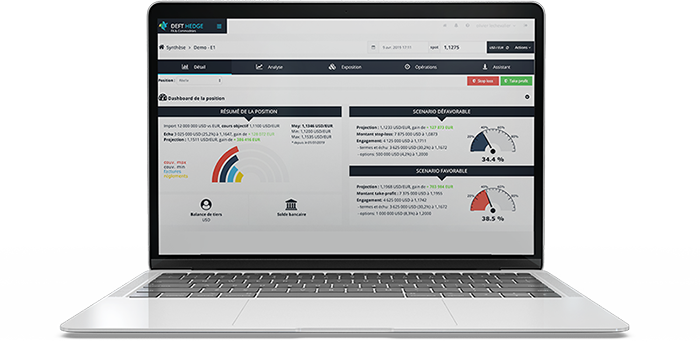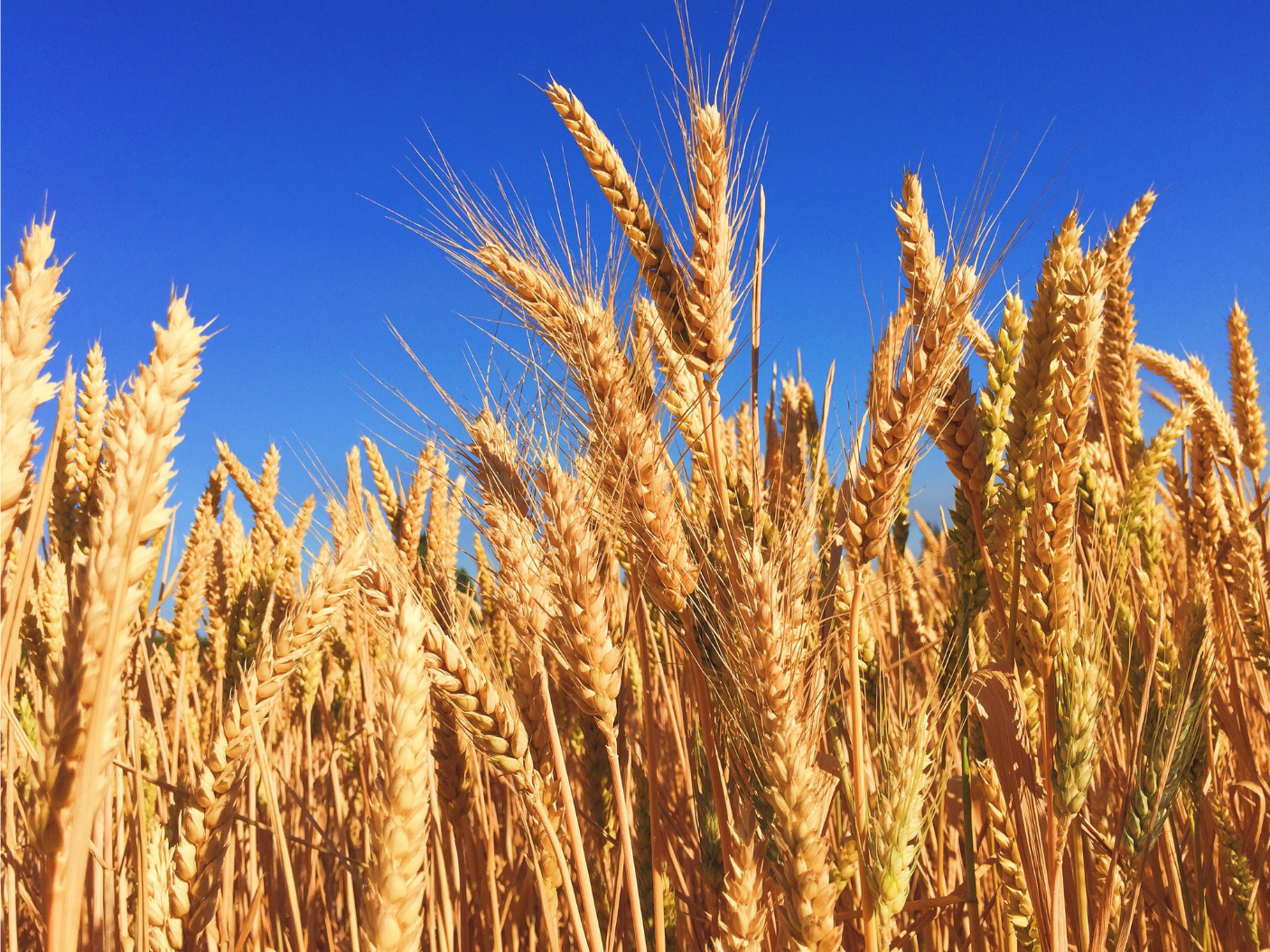Wheat Prices:
Discover our solution!

The commodities market is a unique market where the fluctuations in various traded values can be particularly significant.
In the event that you wish to invest in this asset, it is important to have a deep understanding of how this market operates and the various indicators to follow in order to determine the best strategy for your company.
To assist you in optimizing your investment strategy in wheat, DeftHedge offers its SaaS solution, providing you with all the necessary information and helping you make informed decisions. DeftHedge is the ideal tool to minimize your financial losses in wheat investments.
How does the wheat market work?
The commodities market is a sector where many commodities are traded. Among these commodities, wheat is one of the most widely used materials in the world and is the subject of many financial transactions.
Before delving deeper into how the wheat market works, it’s important to note that wheat transactions are conducted in bushels, not kilograms. This unit of measurement is specific to the grain market: one bushel is approximately equivalent to 27.52 kilograms of wheat.
There’s also a unique aspect to wheat trading when it comes to quoting prices. Wheat prices are quoted in cents per bushel, not dollars.
Having knowledge of these specificities of the wheat exchange market is essential to gain a proper understanding of its operations and to develop the most effective financial strategy. Wheat trading primarily takes place on two main commodity exchanges:
- Chicago Board of Trade (CBOT)
- NYSE Euronext
On these exchanges, wheat trading is done through the signing of futures contracts or options contracts.
What is the interest in buying wheat?
Used in various industries, wheat is one of the commodities whose value has been steadily increasing for nearly 20 years. With the development of bioethanol and its significant use in the agri-food sector, wheat is in high demand.
As a result, trading in this commodity is substantial and offers genuine opportunities. To engage in transactions on this market, it’s essential to have all the information about future developments in wheat prices.
To assist businesses in managing their commodities, including wheat, DeftHedge offers its SaaS software to optimize the purchase or sale of commodities.
How to Invest in Wheat Effectively?
Wheat is grown everywhere, making it easy to invest in commodity markets. These investments can take various forms:
- ontract for Difference (CFD)
- Exchange-Traded Fund (ETF)
- Collective Investment Undertaking in Transferable Securities (UCITS)
- Derivative Products (Options, Futures, Warrants, Turbos)
Investments in wheat can thus take different forms. In the commodities market, several players are involved in these transactions: producers, consumers, traders.
To invest effectively in wheat, it’s essential to choose the most suitable financial products for your purchases or sales of this commodity.
What factors influence the price of wheat?
Like other commodities, the price of wheat is not linear and is subject to multiple fluctuations.
Like other commodities, the price of wheat is not linear and is subject to multiple fluctuations.
This balance between supply and demand is influenced by various external factors:
- Weather: In cases of adverse weather conditions, wheat production tends to decrease, leading to an increase in wheat prices on the markets.
-
Stocks: Wheat is produced on a global scale, and its stock levels can vary throughout the year. The levels of wheat stocks also play a significant role in the fluctuation of wheat prices on the stock exchanges.
-
Demographics: As the world’s population increases, the demand for wheat becomes more substantial because this commodity is heavily used in human and animal food.
-
Technological advancements: If new agricultural technologies enable higher production volumes at lower production costs, this tends to reduce wheat prices.
In addition to these factors influencing wheat prices, other factors to consider include:
- Demand from developing countries
- Changes in demand and prices of competing commodities (such as corn, rice)
- Exchange rate fluctuations between the euro and the dollar
- Energy costs
- Geopolitical situations (international conflicts, embargoes, etc.)
How to limit risks of wheat price fluctuations?
If the wheat price is influenced by various factors, there are still some solutions to limit the risks of financial losses due to these fluctuations. Among these solutions, using futures contracts can be more protective when buying or selling wheat.
On futures markets, it is possible to buy or sell wheat at a fixed price even before it is produced. Therefore, as a buyer, you will not be affected by a potential rise in the price of wheat.
Conversely, if the wheat price falls between the time of contract signing and actual delivery, you will not be able to benefit from that price decrease.
The use of futures contracts for wheat investments appears as an interesting solution to reduce the risks of financial losses.

How will our commodity management software help you in wheat procurement?
Commodity management is a challenge for many businesses looking to buy or sell on international financial markets.
To assist professionals in making the best possible transactions, DeftHedge offers a SaaS software solution that provides comprehensive information on the state of commodity markets and their developments.
If you want to invest in the wheat market, our software, specially designed for professionals, will be a valuable asset in determining the best strategy to adopt.
With DeftHedge’s various features, companies can significantly improve their position in the commodity markets and make investments at the right time in the wheat market.
On this SaaS software, companies can easily track the wheat market and its evolution, allowing them to adapt their investment strategy effectively. This solution will become an essential tool in your decision-making process, helping you reduce the risks of financial losses in this volatile market.
Whether you are a wheat producer or buyer, it is essential to adopt the best possible strategy in the wheat market. To succeed in your transactions, our software offers multiple features to assist you in your daily activities:
– Portfolio management
– Wheat price tracking
– Assistance in improving your investment strategies
– Automation and simplification of daily tasks
– Optimization of financial results
– Centralization and data security
Due to its use in various industries, wheat is one of the most traded commodities. If you wish to buy or sell wheat, it is essential to define your market strategy carefully. With DeftHedge’s “SmartStrategy” feature, companies can simulate different strategies to determine the right market positioning based on specific factors.
This feature is particularly useful for maximizing financial gains while reducing risks associated with commodity management and wheat price volatility.
To track the daily and precise evolution of wheat prices, it is essential to have all the necessary tools. With DeftHedge, companies have a powerful software solution to closely monitor all commodity market developments and determine the best possible strategy for their investments.
To fully benefit from all the features of this SaaS software, DeftHedge’s teams are available to advise and assist professionals in getting started with this financial forecasting tool. Thanks to this tool, companies significantly enhance their strategy in the wheat market and reduce the risks of losses due to fluctuations in wheat prices.
